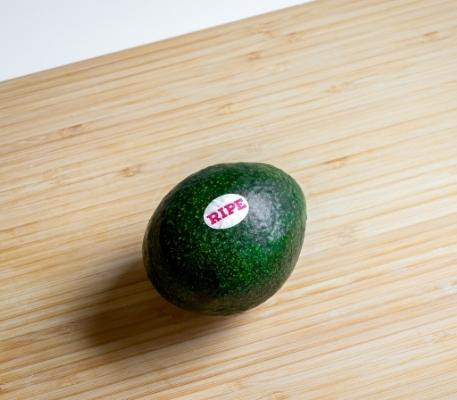Here’s What to do With Those Annoying Produce Stickers
Posted By on Sep 23rd 2024
In the likely chance you’ve bitten into an apple only to discover that you’ve ingested half the produce sticker, you may wonder, “Are stickers on fruit edible?”
Although the ideal time to ask this question is before the sticker sits in your stomach, you’ll be relieved to know that the PLU (Price Look Up) stickers won’t cause harm if eaten (even though they aren’t edible). However, they could be harmful to the planet.
PLU stickers play an essential role in the global produce supply chain. But, in an age when consumers are more concerned about their health and ecofriendliness than ever, we can surely do better than little plastic stickers. The good news is that recent legislation in the EU has caused a ripple effect, pushing PLU stickers toward biodegradability. Here’s what you need to know.
Are produce stickers biodegradable?
Currently, the vast majority of produce stickers are still not biodegradable. But this is changing.
For now, PLU stickers are made with a thin layer of plastic, most commonly vinyl (though occasionally paper is used). Using plastic means the stickers can better withstand water, sprays, transit, and packaging as they move from the producer to the shipper to the retailer. However, vinyl and other thin plastic films are not compostable or biodegradable, and you should remove the sticker before composting.
Source: City of Calgary
Industrial composting facilities are happy to get our food waste. But, they struggle with the PLU sticker contamination issue. Screening these stickers is time-consuming and challenging. Because of how tiny, thin, and pliable they are, stickers will often get through the screens designed to catch them, which leaves a sticky, plastic mess and creates a source of microplastics in the resulting compost.
Because small plastic stickers cause significant pollution, many countries are enacting laws to ban non-biodegradable PLU stickers, including on imported fruit. These new rules are already creating a global ripple effect, causing countries like the U.S. to redesign their PLU labels. We talk more about this below.
What should you do with the produce sticker?
Because plastic produce stickers are not biodegradable or edible, you must ensure that every sticker is in landfill-bound garbage. While sending anything to the landfill may send shivers down any eco-conscious spine, this is actually the most environmentally friendly way to deal with produce stickers for now due to the above-mentioned contamination issues.
To prevent accidental compost contamination or ingestion, we recommend peeling off all PLU stickers as soon as you bring your groceries home before putting produce into your fridge or bin.
Are you looking for an alternative to trashing these stickers?
Some have taken to collecting them or creating art with them, which is pretty cool and creative.
Don't eat produce stickers
Stickers on fruit are not edible. Of course, once you learn that these stickers are typically made of plastic, I imagine you aren't inclined to want to eat them anyway, but it's worth mentioning.
The Internet has long circled the rumor that the FDA has labeled produce stickers and their adhesives as “food-grade.” In truth, the FDA has only ever labeled produce stickers as “not harmful to eat,” which does not mean the same thing as “edible.”
If you accidentally ingest a sticker on an apple, don't panic. It will go through your body just fine, just like chewing gum (also made of plastic). But don't make it a habit of eating fruit stickers just because you can.
Where did the myth come from that these stickers are edible? PLU stickers are "FDA compliant," but that does not mean that they should be eaten. FDA-compliant means a material is safe for direct food contact and that once the food and material are separated, there won't be any residue from the material left on the food that could harm you. Sometimes referred to as "food contact substances (FCS)," this material is typically used to manufacture, package, transport, or store food.
Households nationwide use plastic wrap or baggies to store food, but they know not to eat the plastic wrap. This is the same thing.
What does the four-digit code on fruit stickers mean?
If they're so bad for composting, why do they put stickers on apples anyway? PLU stands for "Produce Look Up," and it identifies the produce item to each entity along the supply chain. The International Federation of Produce Standards (IFPS) creates and manages this list, which currently has over 1500 codes. Each variety of produce items carries a unique code. For example, an organically grown Fuji apple has a different code from a conventionally grown Honeycrisp apple.
It doesn't make sense for an individual to learn these different codes. But if you know a few tricks, PLU codes can help you as much as they are helping your checkout clerk. The three most important distinctions are:
- Organic produce has a five-digit PLU number and begins with the number 9.
- Conventional produce has a 4-digit PLU number that begins with the number 4.
- Genetically modified (GMO) produce has a five-digit PLU number that begins with the number 8.
- Stickers also indicate the country of origin, which can be helpful, especially for those looking to reduce their food miles.

PLU stickers are not the devil. They are chock full of information about our global produce supply chain. It is mind-blowing to think about how much essential information is captured on such a tiny little sticker and that producers and shippers worldwide follow the same standards.
Is there a better future for produce stickers?
Governments worldwide have realized the environmental danger PLU stickers pose and have implemented legislation to address it. In 2022, France became the first to enact such laws, banning all plastic packaging on fruits and vegetables, even on imported goods. This law has since evolved into the EU’s proposed sustainable packaging rules, which include guidelines for single-use plastic use for fruits and vegetables.
In anticipation of the new EU standard, the USDA began working on developing home-compostable PLU stickers. This is a much-needed step in the right direction that can solve the circularity issues of produce stickers while enjoying the benefits of the PLU system. Furthermore, the USDA plan includes creating food-grade adhesives, which could make the stickers on fruit edible.
Other solutions show some promise. Food scientists have been playing with the idea of laser-etching produce labels directly onto the fruit. However, problems like scannability over time, the introduction of microbes, and increased labor hours have delayed the implementation of such a solution.
While the powers that be work toward more sustainable alternatives to PLU stickers, we should all take steps to reduce the amount of trash sent to landfills and recycle wherever possible. For now, the best way to dispose of produce stickers is to throw them in the trash. However, you can minimize the impact of your waste elsewhere. Bringing a reusable bag to the grocery store, shopping at local farmers markets, and composting and recycling when you can all go towards a healthier planet for all.
At EcoEnclose, we're all about sustainable packaging, and fruit happens to come "packaged" in compostable material already. Just make sure you take the little sticker off first.
Shop eco-friendly stickers
EcoEnclose eco-friendly custom stickers are vailable on our unique 100% recycled, curbside recyclable Zero Waste Release Liner.
About EcoEnclose
EcoEnclose is the leading sustainable packaging company that provides eco-packaging solutions to the world’s most forward-thinking brands.
We develop diverse, sustainable packaging solutions that meet our rigorous research-based standards and customers’ goals. We drive innovative packaging materials to market and consistently improve the circularity of existing solutions.



